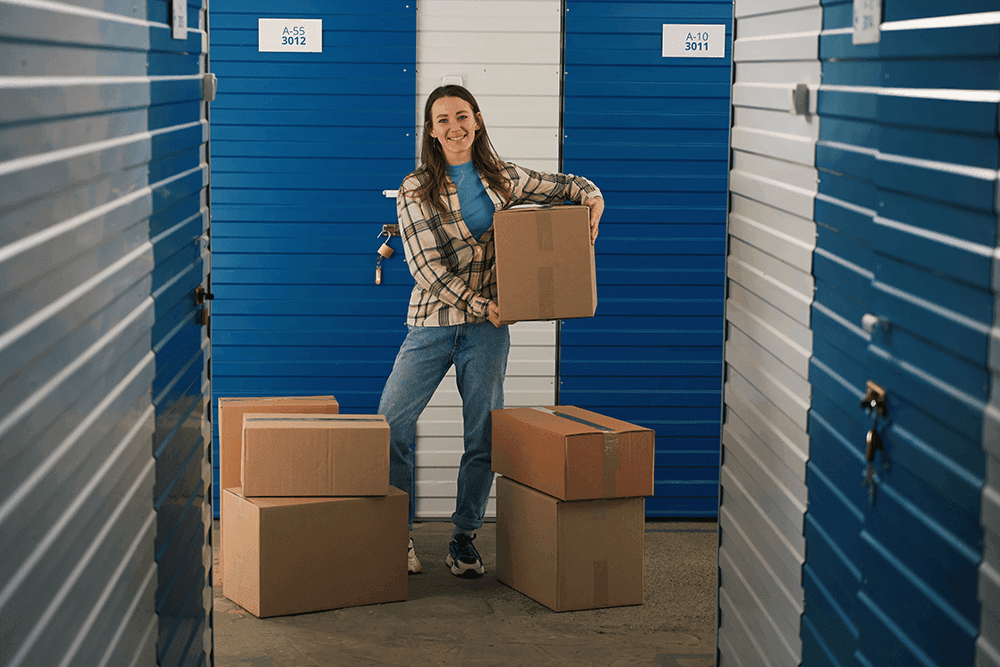
 Packing Tips
Packing TipsHow to Prepare Photos for Long Term Storage
Although digital photos have become much more common than old-school types, you may still print off pictures or have many older ones in your home that must be stored. Whether you are moving or just making extra room in your house, it is critical to find a way to protect these photos to avoid severe damage and keep them safe for future generations.
Find a Safe Place to Store Your Photos
Where are you planning on putting your old photos in storage? You need to make sure that you avoid humid or damp areas because these can cause damage to your photos that is irreversible. For example, a wet or unfinished basement is a terrible place to store pictures because you're not likely to check them out that often and the moisture may easily cause stains and warping to their surface.
The same issue can affect unfinished or poorly insulated attics. Excessive moisture here will cause the same problems you saw with the basement and other similar places. Therefore, it is essential to find a temperature- and moisture-controlled area that is safe. Storage centers have rooms that are adequately controlled to meet your photos' needs.
And don't forget that you need to store your photos at temperatures of at least 75 degrees or below at all times. Don't go too low – freezing temperatures can damage pictures – but err on the side of keeping the room below 70-75 degrees Fahrenheit. Any hotter and your photos may end up getting baked, warped, or even losing some color that may end up running off of the pictures.
Proper Photo Preparation
When you store your photos, you need to prepare them by placing them on sheets that make them easier to organize and keep without complications. These photo storage sheets typically come in one of two types – acid-free paper or plastic. The kind that you use will vary depending on a myriad of factors, some of which may be out of your control unless you take steps to decrease storage humidity and temperature.
For example, acid-free paper is often the best choice for your photos because it won't trigger any damage. Though this type of backing is not as strong as plastic, it can still last for a long time with proper moisture and heat control. However, if you don't manage these elements correctly, you can expect damage to your paper that may end up affecting your photos at the same time.
Are plastic photo backers any better? They may tend to stick to your photos if it gets too hot and may curl in high-moisture areas as well. However, plastic provides strong backing and make it easier for you to check out your photos later. The choice between the two mostly depends on how well you can control your storage temperature and humidity and how often you plan on checking your images.
And please, please, for the sake of your photos, do NOT use any adhesives to hold your pictures in place. Better that they get loose and move in the sheets than end up getting damaged due to old adhesives that tear off parts of the photo. Don't even use adhesives designed for storing images – even these types can end up causing damage that may spread and become persistent.
Organizing the Photos in Boxes
Try to find photo storage boxes from a photography shop explicitly used for this purpose. Next, go through all of your old photos and organize them based on a few elements. For example, try to sort them by age, what family members are involved, where the images were taken, and anything else that makes it easier for you to organize them for your storage needs.
Next, place your photos evenly across your sheets and place the sheets in photo books that can slide easily into these photography boxes. If you do not have these boxes, you can still slide your sheets into a standard cardboard box to keep them safe. You will need to seal the package properly and label it with a piece of tape or a similar item to ensure it is protected.
Just make sure to place packing paper or bubble wrap on the top, bottom, and sides and even some humidity controlling item, like a small bag of baking soda, with them. And make sure that you place your box of photos on top of any other things you plan on storing – don't place anything heavy on this box as it is likely to collapse on you if you aren't careful with how you handle it.
Create Digital Backups for Your Photos
If you properly store your photos, they should last for decades without any significant concerns. However, we also suggest that you scan these photos into your computer and save them in a digital format. There are many types of scanners on the market that can provide picture-perfect replications of your images. Once you have scanned all of them, you can store the old photos in the method mentioned above and save these digital files in a backup hard drive and a cloud-storage medium to keep them safe.
Though it may seem unnecessary to have so many backup options for your photos, imagine what will happen if your hard drive crashes or your storage area floods – you'll still have these irreplaceable items saved in a cloud storage area. And you can more easily share these photos online with others, as well, ensuring generations get the chance to experience these incredible pictures.
We're Your Storage Solution!
Storage Rentals of America is your convenient self-storage solution. So come into our office or give our storage experts a call at 1-800-457-5678. Our call center is available 7 days a week and can help determine which storage unit size best fits your storage needs.



